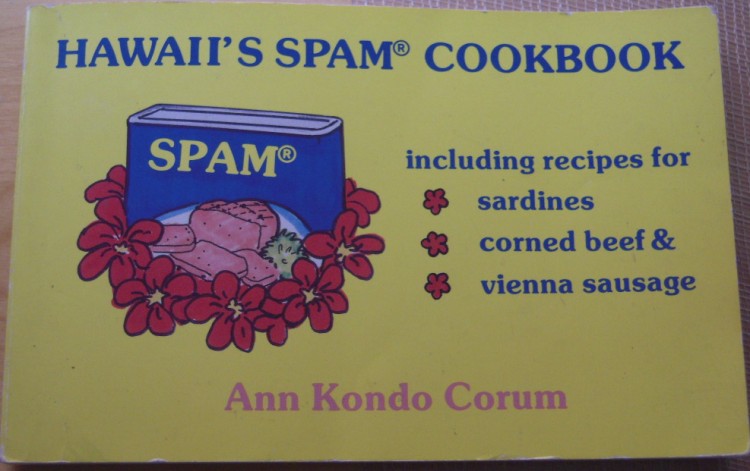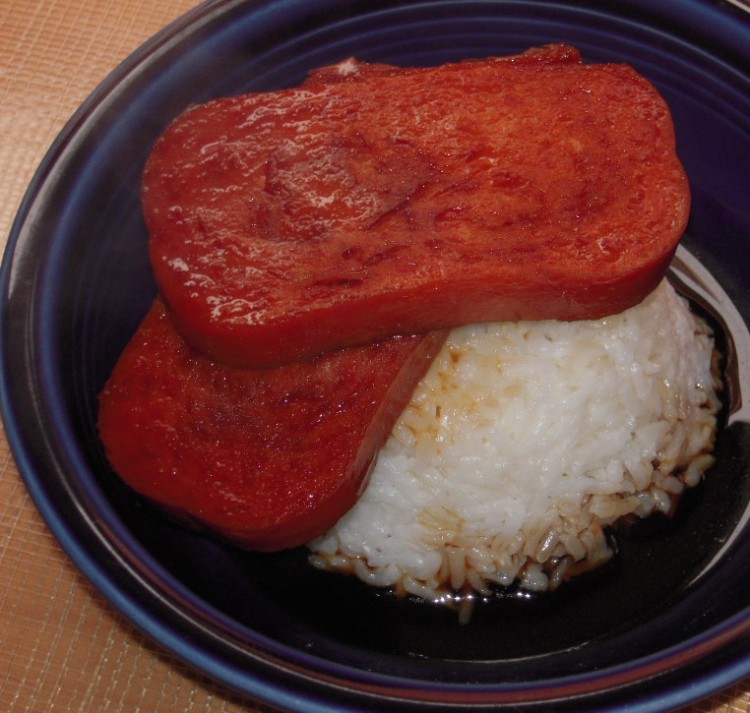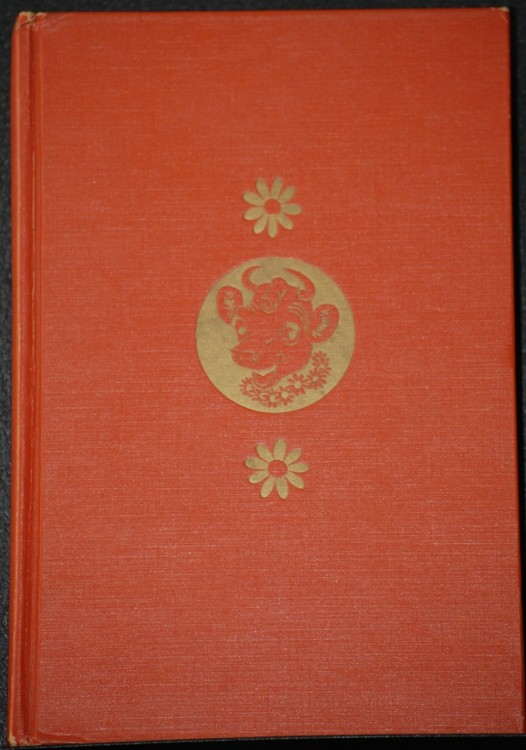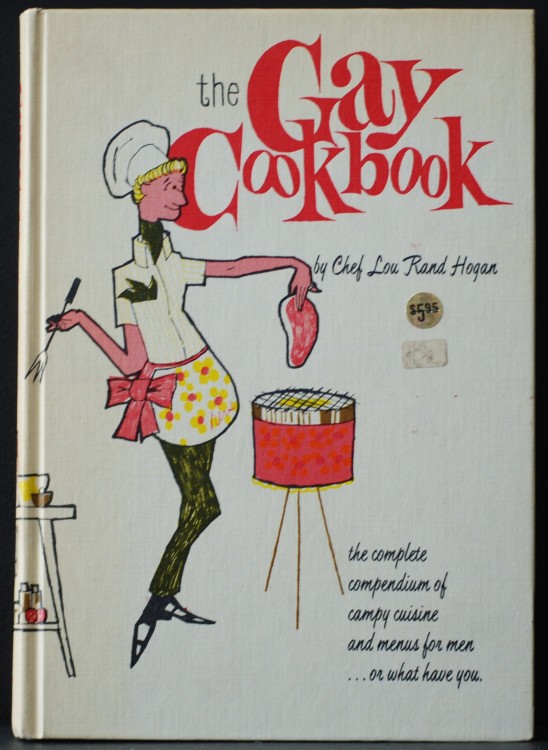
Hawaii’s SPAM Cookbook
SPAM may be an acronym for shoulder pork and ham, or spiced ham, depending upon which resource you consult. Hormel indicates that Spam Classic (I love that) is made from “pork with ham, salt [I’ll say!], water, potato starch, sugar, and sodium nitrite. If you set aside the saturated fat, salt and processing, I guess it’s not as bad as a non-food item that’s sold as food. I don’t know. I like to have SPAM musubi or some SPAM and eggs a couple times a century, so it’s not such a big deal for me. My father loved SPAM, since he ate it in the army, and he would often be seen opening a can with that crazy key resulting in a sharp ribbon of metal that would sometimes slide off course and become vewy intewesting.
When I make SPAM I use the turkey variety, which does not have mechanically-seperated turkey, by the way. (The USDA requires that it be listed if used.) This contains less saturated fat, and is the lesser of several evils. While turkey SPAM does not have the texture of “real” SPAM (and that says something), I usually marinate it in a teriyaki-like sauce anyway, so it winds up tasting the same.
I found a simple recipe in Hawaii’s SPAM Cookbook that I adapted. It tastes good served over rice – close to SPAM musubi, especially if you serve it with a few strips of nori and season the rice with sushi vinegar.
Soy Sauce SPAM
1/4 cup soy sauce
1/4 cup sugar
1/4 cup mirin
2 teaspoons grated ginger
SPAM, sliced; I use two 12-ounce cans for our family of 4 plus a large dog
1). Bring all except SPAM to a boil in a low skillet; I use a large skillet so I am able to spread the SPAM out
2). Lay in sliced SPAM and simmer over low flame for 3 or 4 minutes, turning over midway through
Serve with rice and have a bottle of hoisin sauce standing by.

Spam over rice in a bowl



